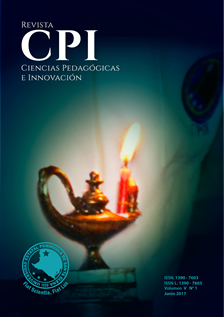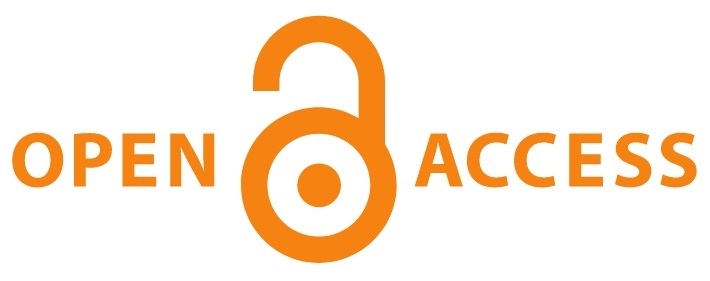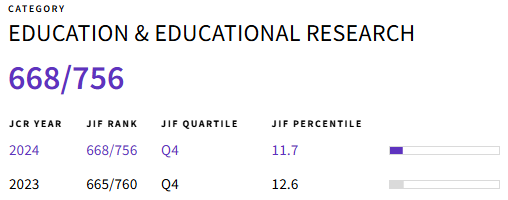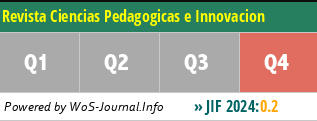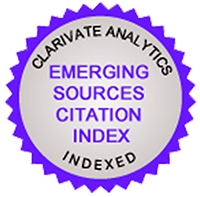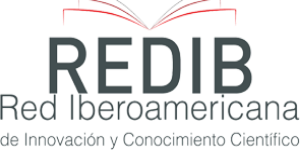Risk factors to acquire sexual transmission infections in adolescents of the “Colegio Municipal Técnico Siglo XXI”. Salinas. 2013 -2014
DOI:
https://doi.org/10.26423/rcpi.v5i1.152Keywords:
Risk factor, sexually transmitted infectionsAbstract
The following research aims to determine the degree of knowledge about risk factors and preventive measures that adolescents have of the Municipal Technical Colegio Siglo XXI of the parish José Luis Tamayo del Cantón Salinas. The research uses a methodology of quantitative design, descriptive and cross-sectional type. To collect the information, a questionnaire was applied to 145 high school students, in which the educational intervention was evaluated. Among the results obtained, it is evident that adolescents have a deficit in knowledge about the behavioral risk factors of Sexually Transmitted Infections, such as: correct use of female and male condoms, risky sexual practices, multiple sexual partners, alcoholic drinks. It was also found that both sexual abstinence and direct contact with people who exhibit dermatitis or skin lesions are not the only strategies to prevent STIs. Likewise, the importance of the education of sexuality is emphasized, since the information disseminated in any medium of communication is not enough. In general, the majority of young people begin their sexual activity during adolescence, therefore, the increase of infections is a social problem. Hence the need to implement an educational guide about sexuality and Sexually Transmitted Infections, and use it as a didactic recruiter during the teaching - learning process.
Downloads
References
BRUZOSC. Educación para la salud en la escuela. 790th ed. Santos Dd, editor. España; 1991.
YEROVI G. Ministerio de Salud Pública. [Online].; 2011 [cited 2016 Julio 12. Available from: http://www.salud.gob.ec/programa-nacional-de-prevencion-y-control-de-vihsida-its/
UNICEF. Una etapa fundamental. 10017th ed. Nueva York: División de Comunicaciones; 2002.
INMA. Cuidados Críticos y Paliativos. [Online].; 2014 [cited 2012 Octubre 19. Available from: http://inmaglezglez.wordpress.com/type/aside/
CASTRO ABREU U. Conocimientos y factoresde riesgo sobre infecciones de transmisión sexual en adolescentes. 9705716th ed.: Revista Habanera de Ciencias Médicas; 2010.
PANAMÁ E. Opta por una actitud sexual responsable. [Online]; 2011. Available from: Opta por una actitud sexual responsable.
PSICOLOGÍA DEL DESARROLLO. Adultez y Vejez. 7430th ed. Madrid: Médica Panamericana; 2009.
N COLOMBIA. Factores de riesgo para ETS en adolescencia. 1st ed.: Revista de Pediatría; 2012.
CASANOVA R. Infecciones de transmisión sexual. [Online].; 2004 [cited 2012 Agosto 12. Available from: http://www.ebrary.com.
CALDERÓN E. Diagnóstico, tratamiento y prevención de las infecciones de transmisión sexual. 23200th ed. Bogotá: Revista Cubana de Medicina General Integral; 2013.
Downloads
Published
Issue
Section
License
El titular de los derechos de autor de la obra, otorga derechos de uso a los lectores mediante la licencia Creative Commons Atribución-NoComercial-CompartirIgual 4.0 Internacional. Esto permite el acceso gratuito inmediato a la obra y permite a cualquier usuario leer, descargar, copiar, distribuir, imprimir, buscar o vincular a los textos completos de los artículos, rastrearlos para su indexación, pasarlos como datos al software o usarlos para cualquier otro propósito legal.
Cuando la obra es aprobada y aceptada para su publicación, los autores conservan los derechos de autor sin restricciones, cediendo únicamente los derechos de reproducción, distribución para su explotación en formato de papel, así como en cualquier otro soporte magnético, óptico y digital.

